| Title | Novel Cyclic Homogeneous Oscillation Detection Method for High Accuracy and Specific Characterization of Neural Dynamics. |
| Publication Type | Journal Article |
| Year of Publication | 2024 |
| Authors | Cho, H, Adamek, M, Willie, JT, Brunner, P |
| Journal | bioRxiv |
| Date Published | 2024 Mar 23 |
| ISSN | 2692-8205 |
| Abstract | Detecting temporal and spectral features of neural oscillations is essential to understanding dynamic brain function. Traditionally, the presence and frequency of neural oscillations are determined by identifying peaks over 1/f noise within the power spectrum. However, this approach solely operates within the frequency domain and thus cannot adequately distinguish between the fundamental frequency of a non-sinusoidal oscillation and its harmonics. Non-sinusoidal signals generate harmonics, significantly increasing the false-positive detection rate - a confounding factor in the analysis of neural oscillations. To overcome these limitations, we define the fundamental criteria that characterize a neural oscillation and introduce the Cyclic Homogeneous Oscillation (CHO) detection method that implements these criteria based on an auto-correlation approach that determines the oscillation's periodicity and fundamental frequency. We evaluated CHO by verifying its performance on simulated sinusoidal and non-sinusoidal oscillatory bursts convolved with 1/f noise. Our results demonstrate that CHO outperforms conventional techniques in accurately detecting oscillations. Specifically, we determined the sensitivity and specificity of CHO as a function of signal-to-noise ratio (SNR). We further assessed CHO by testing it on electrocorticographic (ECoG, 8 subjects) and electroencephalographic (EEG, 7 subjects) signals recorded during the pre-stimulus period of an auditory reaction time task and on electrocorticographic signals (6 SEEG subjects and 6 ECoG subjects) collected during resting state. In the reaction time task, the CHO method detected auditory alpha and pre-motor beta oscillations in ECoG signals and occipital alpha and pre-motor beta oscillations in EEG signals. Moreover, CHO determined the fundamental frequency of hippocampal oscillations in the human hippocampus during the resting state (6 SEEG subjects). In summary, CHO demonstrates high precision and specificity in detecting neural oscillations in time and frequency domains. The method's specificity enables the detailed study of non-sinusoidal characteristics of oscillations, such as the degree of asymmetry and waveform of an oscillation. Furthermore, CHO can be applied to identify how neural oscillations govern interactions throughout the brain and to determine oscillatory biomarkers that index abnormal brain function. |
| DOI | 10.1101/2023.10.04.560843 |
| Alternate Journal | bioRxiv |
| PubMed ID | 38562725 |
| PubMed Central ID | PMC10983872 |
| Grant List | U24 NS109103 / NS / NINDS NIH HHS / United States U01 NS108916 / NS / NINDS NIH HHS / United States U01 NS128612 / NS / NINDS NIH HHS / United States R01 MH120194 / MH / NIMH NIH HHS / United States R01 EB026439 / EB / NIBIB NIH HHS / United States P41 EB018783 / EB / NIBIB NIH HHS / United States |

